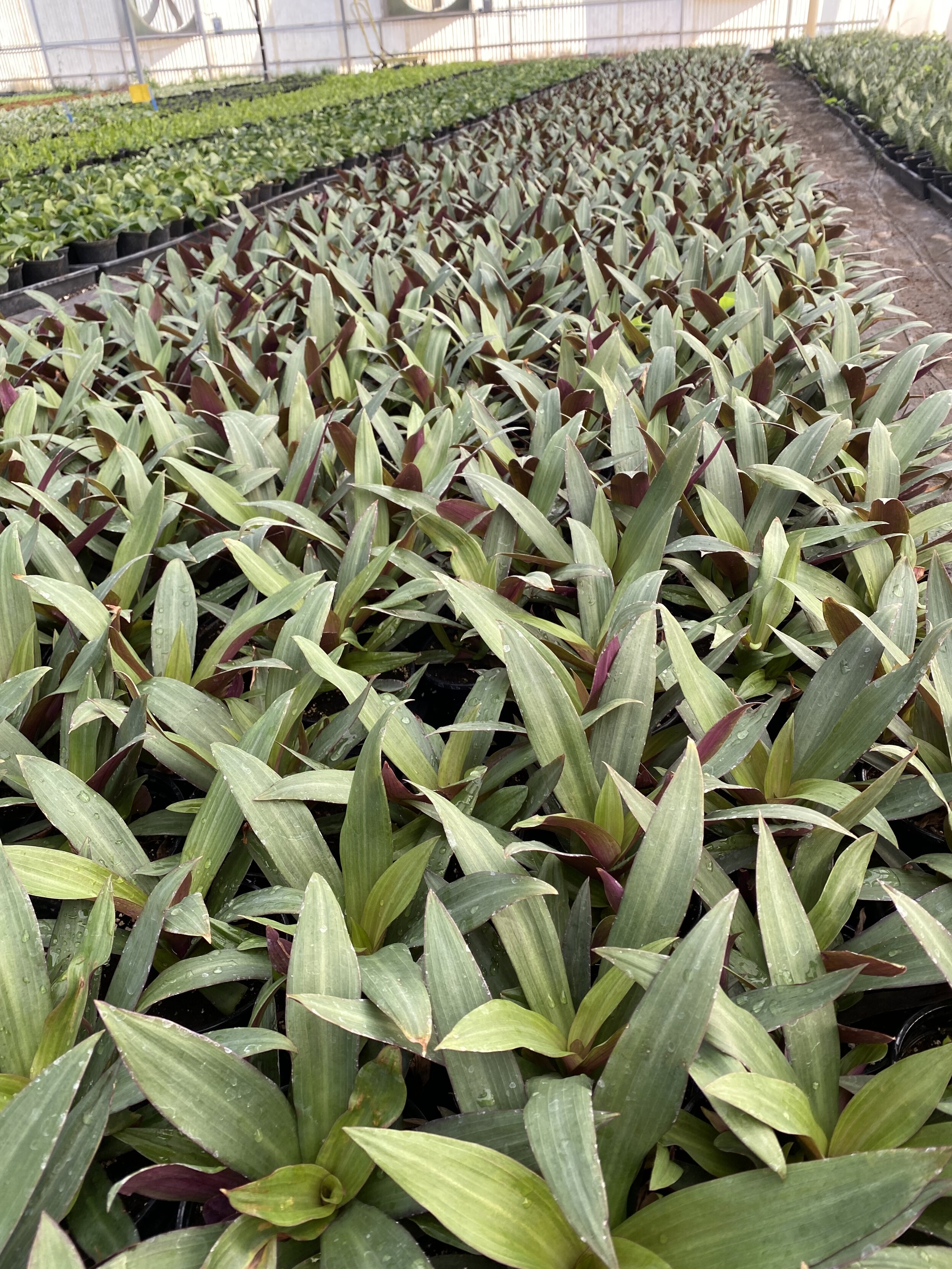Rhoeo
The Plant of Divinity
The tricolored white, pink and green foliage of the Rhoeo ‘Tricolor’ is a bright addition to any home. Rhoeo is commonly called boat lily, Moses-in-a-cradle plant, or oyster plant. It gets its several names from its small white flowers surrounded by special purple leaves, called bracts, which make the "boat" or "oyster shell”.
Rhoeo Care Line Classification
Care Information
Light
Place in medium to bright light.
Temperature
Prefers temperatures between 60-85°F.
Water
Water thoroughly when soil feels dry to the touch. Remove wrap or decor before watering. Drain off all excess water. Do not allow plants to stand in water.

The Rhoeo: Deep Dive
Season
Year round indoors
Care
Rhoeo thrive in bright, filtered light. Not suited for intense, direct sun. Water every 1-2 weeks, allowing soil to dry out between waterings. Expect to water more often in brighter light and less often in lower light. It is best to take off the wrap or non-draining container and place in a sink when watering to allow it to drain from the bottom of the pot. Once the pot has drained, replace it to its original spot.
Home to Garden
Rhoeo 'Tricolor' prefers full or partial sun in a moist, well-drained location. Provide afternoon shade or dappled shade in very hot climates. They can be planted in USDA zones 9b through 11. Check the soil daily, and water thoroughly when dry.
Flower Meaning
The plant’s common name is taken from the appearance of its flowers. They’re shaped like a little boat or cradle and tucked into the spiky leaves. This brings to mind the biblical story of baby Moses being found in the spiky rushes along the river bank. Other spiritual groups use the plant to represent the hidden power of divinity since the flowers are somewhat hidden.
Fun Facts
Native to southern Mexico and Central America, this evergreen perennial thrives outdoors as a border plant, as ground cover or as a hanging plant. Use caution when working with the Rhoeo. All parts of the plant are poisonous and should be kept out of the reach of children and pets. If eaten, the plant causes lips, mouth and throat irritation, as well as stomach pain. The sap is also an eye and skin irritant, causing stinging and itching. Touching the leaves can result in contact dermatitis in sensitive individuals.








